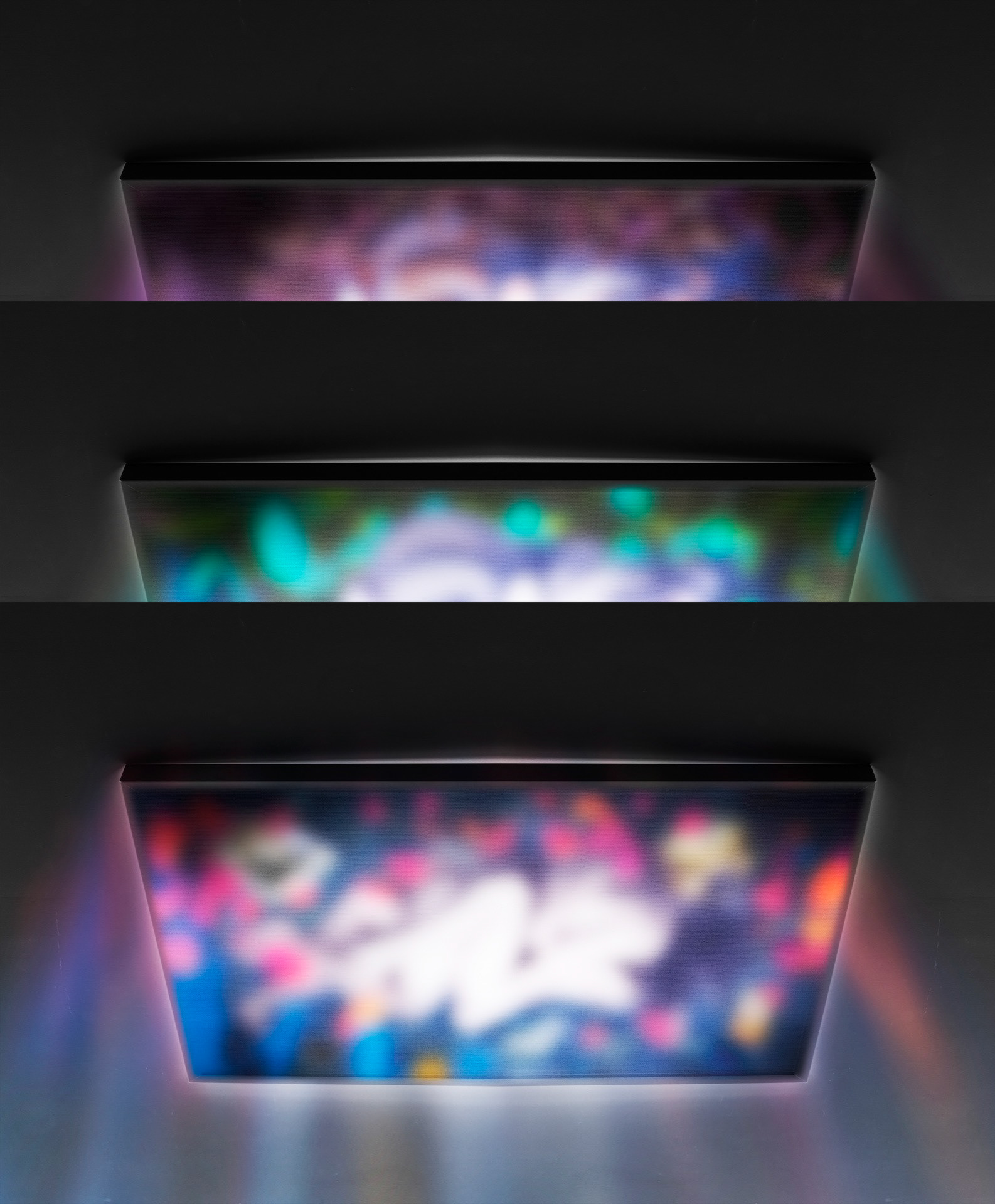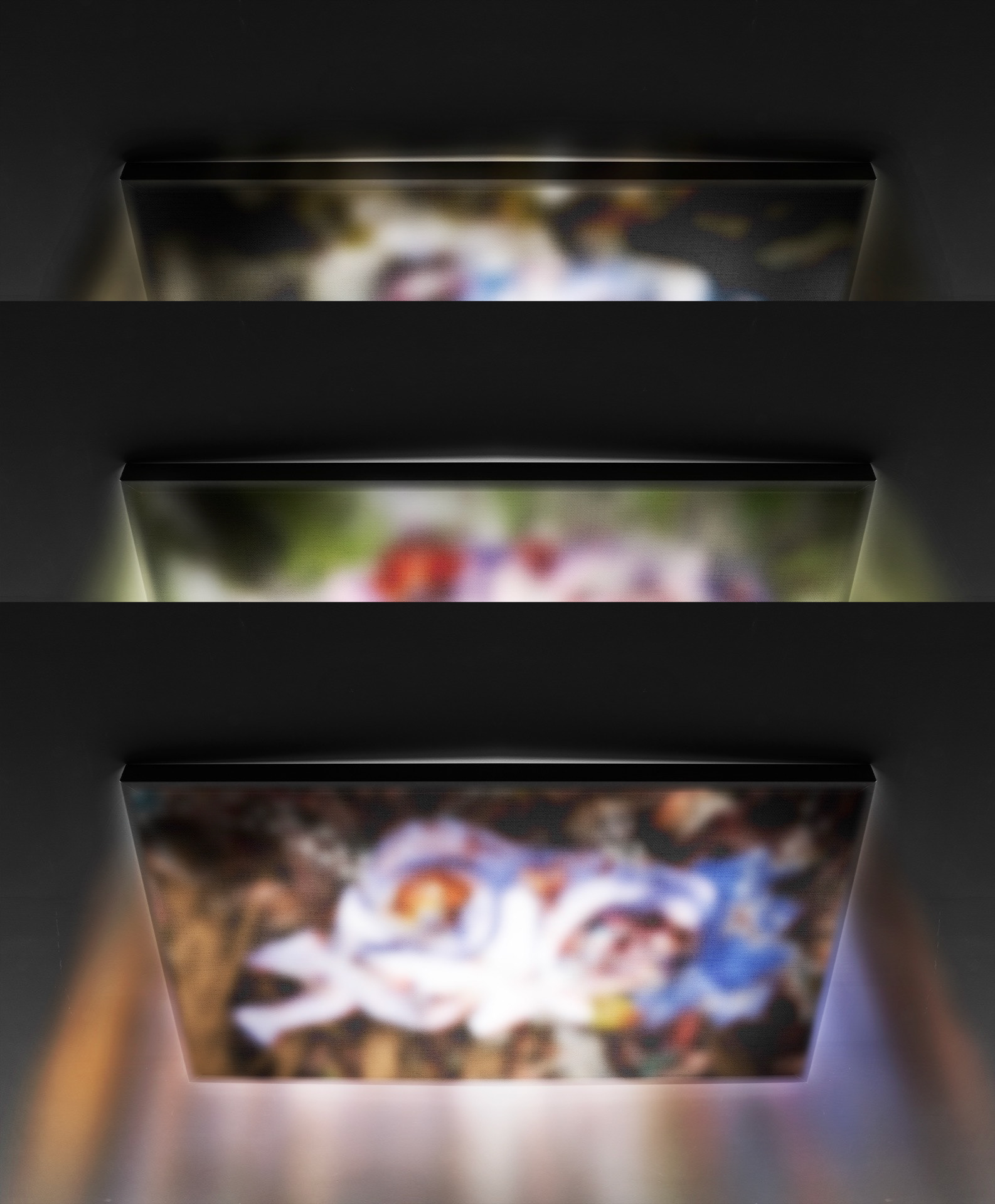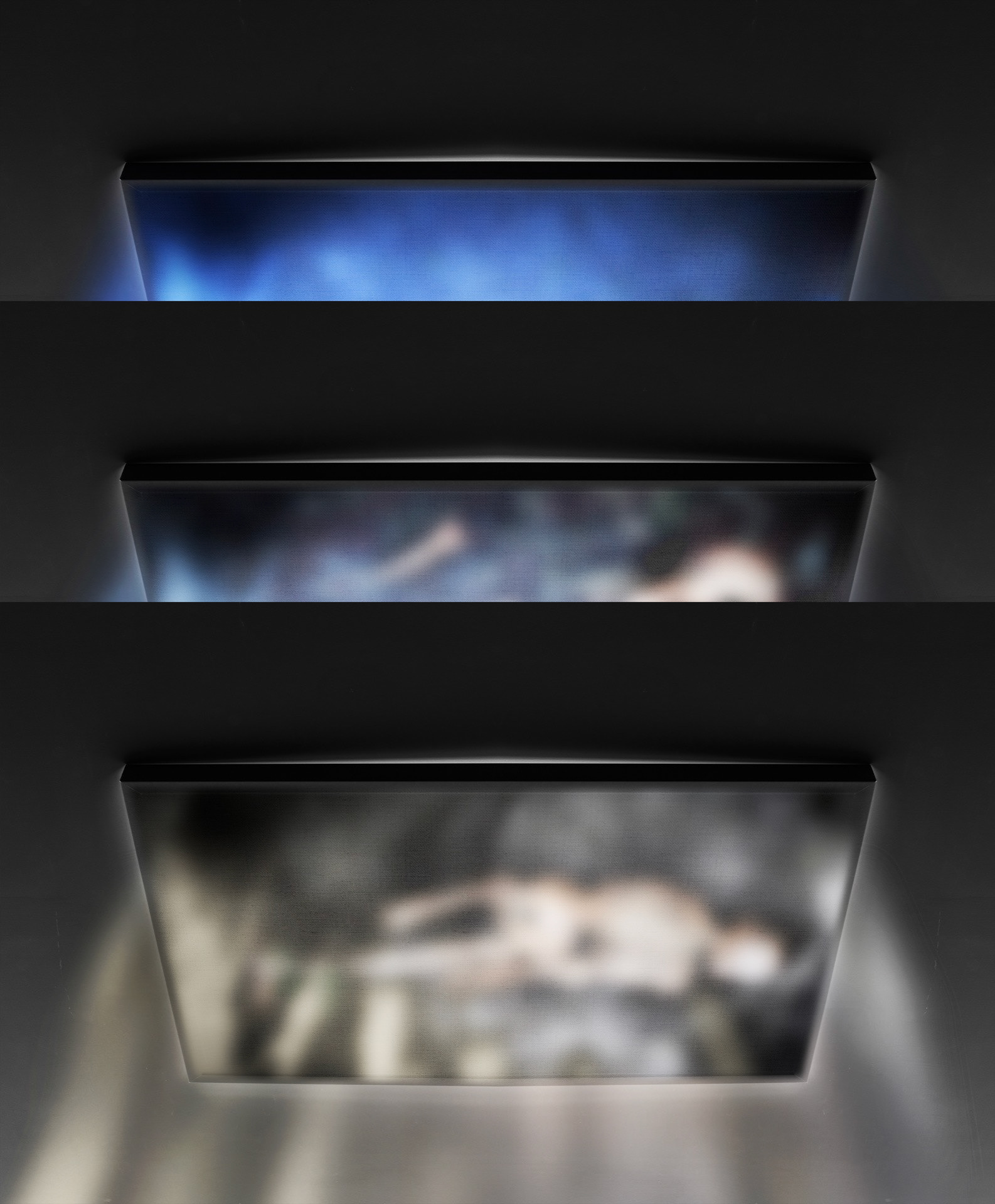N1702為觀想屍體腐敗過程中的九個階段,原形取自漢傳佛教下的「九想觀」,又作九相觀,亦作九想、九相。想,即觀想之略。相,指屍相。取其「新死、肪脹、血塗、肪亂、啖食、青瘀、白骨連、骨散、古墳」等九個從屍體化做自然的離散時間切片。為佛教觀想法門之一,強調人對屍體的醜惡諸形相作觀想,斷我執,得究竟解脫。
然而,N1702並非重現歷史上的「九相圖」,畫面亦非再現貌美女屍腐敗之過程,或以戒除色慾為目的。反之,作品中性別模糊的人體死於纏綿之中,讓死亡與愛欲交纏長眠,試著透過作品描繪死與慾融為一體之美。於此,死與性一樣赤裸,也因這兩者都牴觸了人類維持生存的重要依據—勞動生產,於是成了文明中負面、禁忌之事。但是,任何禁忌出現的同時,也會種下破除禁忌的種子。更進一步地說,踰越禁忌並非只為了官能愉悅,甚至可以是一場生命核心的極致探索。
此作非靜止於一幅幅平面,懸空的畫面外層包著一圈不透光的黑布,使每個觀想階段僅能容納一位觀者的身體進入,成為死與慾交纏再現過程中不可或缺的要角。遠觀模糊、色彩斑斕的血肉之軀,曖昧的圖象召喚著一種開放的視覺經驗,容許未知、恐懼、挑逗、騷動,甚至可以是唯美。光暈自上而下將色彩沾染於畫布上,看似無法直接洞悉的幻境,迫使觀者須主動參與並解讀畫面所隱藏的種種訊息。觀者的指尖在模糊的焦平面上游移,視覺與觸覺同時逼視著這場死亡的真相,像是一種開悟、心理狀態的轉變。感官與認知同時在朦朧/清晰、局域/全貌、當下/過去…….相互滲透,游移於不同焦平面上。
"N1702" depicts the nine stages of decay, drawing its essence from the "Nine Contemplations" in Buddhist. It reflects the progression of a body's decomposition. This concept entails observing the nine sequential transitions from a fresh corpse to its return to nature. Originating from a Buddhist meditation practice, it emphasizes contemplation of the unattractive forms of a corpse, aiming to detach from attachment and attain ultimate liberation.
However, "N1702" does not directly replicate the historical "Nine Stages of Decay" or portray the decomposition of aesthetically pleasing corpses, nor does it pursue the eradication of desire. Rather, the artwork features gender-ambiguous human forms entwined in intimacy, merging death and desire in a state of slumber. Through this piece, an attempt is made to portray the harmonious beauty emerging from the fusion of death and desire. In this context, both death and sexuality are presented in their raw forms, challenging the pillars of human survival – labor and production. This juxtaposition has rendered them taboo within society. Nonetheless, with the emergence of any taboo, the seeds of its dissolution are often sown. Furthermore, transgressing these taboos doesn't solely pursue sensual pleasure; it can encompass the ultimate exploration of life's essence.
This work extends beyond static two-dimensional imagery. The suspended images are encircled by an opaque black fabric, permitting only one viewer at a time to partake in each contemplative phase. This arrangement is pivotal in the visualization of intertwined representations of death and desire. When viewed from a distance, the blurred yet colorful flesh conjures an open visual experience, invoking feelings of the unknown, fear, provocation, unrest, and even aesthetics. A halo of light descends onto the canvas, infusing it with hues, crafting an illusion that appears elusive to direct perception. This prompts viewers to engage actively and decipher the concealed messages embedded within the composition. Fingertips traverse the blurry focal plane, with perception and touch simultaneously delving into the truth of death, akin to a form of enlightenment, a shift in psychological state. Simultaneously, the senses and cognition meld, transitioning between blurred and clear, localized and expansive, present and past, traversing diverse focal planes.




